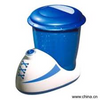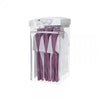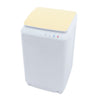The U.S. Environmental Protection Agency will require the state’s roughly 2,000 privately-owned and 300 government-owned large-capacity cesspools to be closed and filled by April 2005.
The owners of these sewage disposal systems are responsible for converting to approved wastewater treatment options, which could include hooking up to an existing sewer line or installing a sewer plant or an approved septic system.
“Cesspools are allowing raw sewage into the environment. When they are near the ocean, they can pollute coastal waters, and in other areas they can contaminate drinking water,” said Laura Bose, a senior policy adviser with the EPA’s Water Division in San Francisco.
The cost could be as little as $2,000 for a lateral line to an existing sewer line, or many times that if a new sewage treatment system must be built, Bose said. When an entire community needs a new system, the cost can be shared, she said.
“Replacing or closing large cesspools that release raw sewage is a vital step in protecting human health and the waters of Hawai’i,” said Alexis Strauss, director for the EPA’s Water Division for the Pacific Southwest region.
Big Island Mayor Harry Kim said he suppports the removal of the old cesspools.
“Although this is a federal mandate, I believe it is important to replace or close these cesspools to help protect the Big Island’s people andenvironment,” Kim said.
Large-capacity cesspools, little more than holes in the ground into which raw sewage is poured, are described as those that serve either 20 or more people or that handle more than 1,000 gallons of wastewater daily.
The closure requirement doesn’t apply to cesspools for single-family homes.
Bose and fellow EPA officials have been meeting with state Department of Health officials and Big Island authorities to review the regulations.
The construction of large-capacity cesspools has been prohibited by the EPA since April 2000.
For more information on the large-capacity cesspool ban, call the EPA at (866) 372-9378.
Property owners who believe they may have large-capacity cesspools should contact the state Department of Health’s Underground Injection Control Program at 586-4258.
(This story appeared in the Honolulu Advertiser on January 14, 2004)













